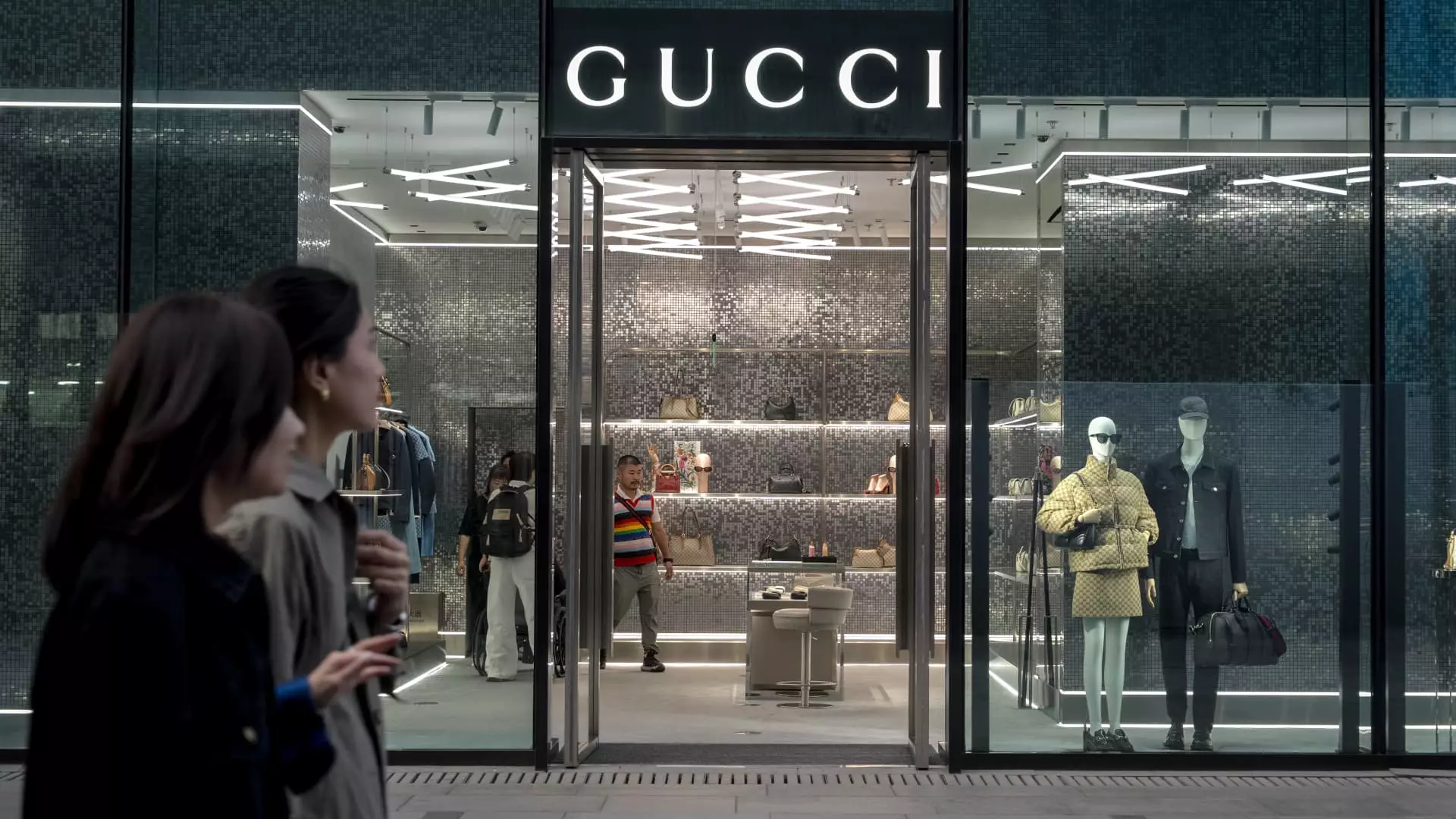The landscape of luxury fashion has been volatile, with Kering, a leading French luxury goods conglomerate, facing significant challenges in recent times. The group’s latest quarterly performance reflects broader shifts in consumer behavior as well as internal restructuring efforts aimed at revitalizing its flagship brand, Gucci. This article delves into the recent sales figures, the implications of these results, and the strategic changes the company is employing to navigate the turbulent waters of the luxury market.
Kering’s fourth-quarter report revealed a concerning trend for the luxury powerhouse. The group reported a 12% decline in revenues year-on-year, amounting to €4.39 billion (approximately $4.52 billion), which, although slightly better than analysts’ predictions, underscores a period of financial distress. Notably, earnings from Gucci, which typically accounts for nearly half of Kering’s total revenue, plummeted by a staggering 24% to €1.92 billion. This decline raises questions not only about Gucci’s market position but also about Kering’s overall strategy in maintaining the brand’s desirability.
The downward spiral in Gucci’s sales signifies more than just disappointing holiday figures. It highlights an underlying shift in consumer preferences and suggests that Kering may need to recalibrate its approach to brand management and market positioning. The once-celebrated Gucci label, renowned for its bold creativity under previous design heads, has struggled to resonate with consumers in an era increasingly defined by minimalism and personal expression.
For the full year, Kering registered sales of €17.19 billion, marking a similar 12% contraction compared to the previous year. The operating income of €2.55 billion, though aligned with the company’s revised forecasts, signals a marked decrease from the €4.75 billion recorded the prior year. Such figures paint a stark picture of Kering’s challenges as it grapples with a shifting luxury retail environment.
Chairman and CEO François-Henri Pinault characterized the recent fiscal year as “difficult,” emphasizing ongoing transformation efforts within the group’s brands. Investors responded to the report with cautious optimism, pushing shares up by 6% initially, before settling to a modest gain of 0.5%. However, the real test lies ahead. The luxury sector has shown signs of resilience, but whether Kering can capitalize on such momentum remains to be seen.
Despite the evident struggles, Kering cited slight improvements in sales across Asia-Pacific and North America for its luxury brands such as Gucci, Yves Saint Laurent, and Bottega Veneta. While specific market details were not disclosed, these hints of recovery could indicate a potential rebound, particularly as luxury consumer trends continue to shift worldwide.
The luxury market is increasingly influenced by the changing dynamics in key regions, notably China. As consumer spending patterns evolve, Kering must stay aware of how geopolitical factors, economic conditions, and shifting fashion trends impact sales. Kering’s heavy reliance on the Chinese market presents both a challenge and an opportunity: reviving consumer interest in its core brands may eventually hinge on the success of effective marketing strategies tailored to local sentiments.
In a bid to reinvigorate the slipping Gucci brand, Kering has announced the departure of its design head, Sabato De Sarno, following a tenure that lasted less than two years. This leadership change comes as a part of the broader strategic overhaul sought by Kering’s management team to reinstate Gucci’s former glory. While historically influential in the fashion realm, Gucci’s recent decline requires an innovative vision that aligns more closely with contemporary consumer demands.
The uncertainty surrounding the new designer’s direction will be closely monitored by investors. As experts like Simone Ragazzi from Algebris Investments note, the hope is for a “reset” that revitalizes Gucci’s brand appeal. However, cautious sentiment persists due to the legacy issues haunting the fashion house. The pressure on Kering to deliver a compelling narrative to its consumers cannot be overstated, as the industry looks for signs of recovery amidst erratic market responses.
Kering is undoubtedly at a crossroads, with its stock currently down 2.5% in 2023 and significantly lower than its previous highs. Experts like Luca Solca of Bernstein suggest a glimmer of hope lies in projected gains across most brand operating profits in 2024. However, the road to recovery remains steep. The luxury market’s ability to rebound amidst systemic shifts will marginally influence Kering’s trajectory going forward.
Kering’s recent performance illustrates the complexities facing luxury brands today. As the group navigates its transformation, the balance between historical prestige and modern consumer desires will be paramount. Implementing innovative strategies while addressing internal challenges may ultimately determine whether Kering can reclaim its leadership position in the competitive luxury sector.

